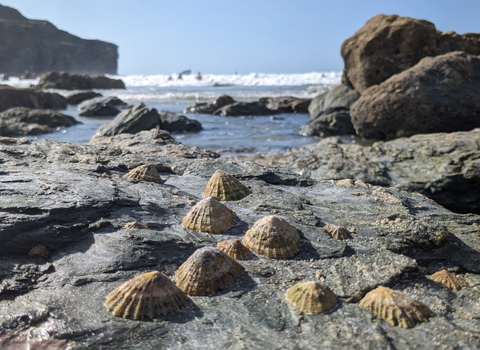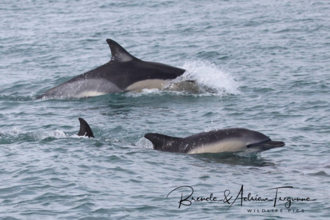Magical December is a great time not just for festivities, but for spotting wildlife too! Despite the nights being at their longest, plenty of wildlife can still be discovered during the daylight hours. So wrap up warm, take a flask and get out in nature.
Here are some of December's highlights...
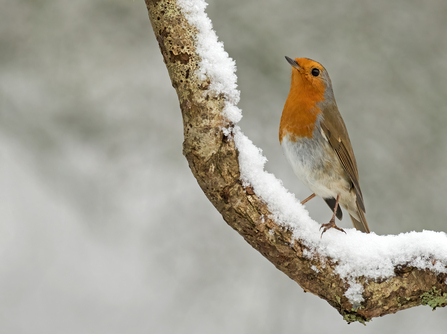
Robin on Snowy Branch. Image by Bill Hall
Robin
You may not realise it, but most of the garden birds you see in the winter are different from those in the summer, as our breeding birds migrate south and are replaced by flocks arriving from the continent. Robins are the exception; most robins do not migrate at all and defend a territory all year round. This is why they continue to sing through the winter, long after the other birds have fallen silent. As food becomes harder to find, you are also more likely to see them foraging out in the open, or even coming to your hand.

Holly Berries in snow, image by Alan Price
Holly
One of our only native tree species to retain its leaves all year round, the Holly tree provides a splash of colour in the winter wood. The red berries contain a toxin which makes us sick if we eat them, but as they ripen and soften in the late winter they become palatable to birds, just when food is needed most. Unlike most plants, holly trees can be either male or female (rather than both), so you will only find the berries on female trees.
Five Acres
Visit Five Acres nature reserve
Wrap up warm on a cold, crisp morning and take a festive walk around our Five Acres nature reserve (situated right next to our headquarters). Our iconic ‘winter thrushes’ – redwings and their larger cousins, fieldfares – migrate here each year from the frozen shores of Iceland and Scandinavia. These attractive birds enjoy feasting on the seasonal berries of hawthorn and rowan when invertebrates are not available. The reserve is also home to tawny owls busy establishing their territories over winter, ready for the first eggs to be laid in February.
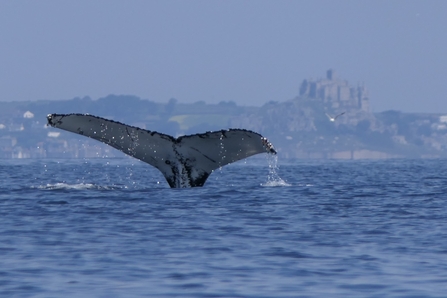
Humpback Whale in Mounts Bay, image by Rupert Kirkwood
A flurry of fins
Get your binoculars at the ready! You may spot a tail fluke or two if you head to our Cornish clifftops this December. Some of our biggest marine mammals have been sighted around our shores in previous winters; migrating long distances to their feeding grounds whilst passing the West coast of the UK. Our Seaquest Southwest team spotted a fin whale, the second largest species on earth, at their public sea watch in St Ives in December 2020, prompting more sightings to follow in the weeks afterwards. Humpback whales have also been seen breaching in Falmouth Bay and Mounts Bay.
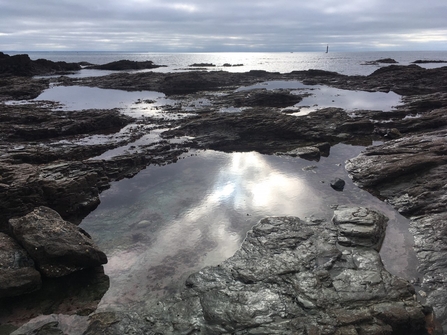
Strandline treasures
Winter is a brilliant time to go beachcombing, as the stormy weather tends to wash up interesting and extraordinary marine finds. Scour the shore to hunt for mermaid’s purses – the tough, leathery pouches that are actually the eggcases of sharks and rays. Goose barnacles can also be found attached to driftwood, ropes or flotsam after big storms. But look closely… you may spot an unlikely hitchhiker amongst those long fleshy stems, just like Cornwall Wildlife Trust supporter Emily did last year with this rare sighting of a Columbus crab!
Christmas wreath for birds
Take action: make a Christmas wreath for birds!
Get your crafting kit out this Christmas to make a special bird feeder wreath! Not only will you add a festive touch to your front door or garden, but you’ll be giving our feathered friends a treat with some of their favourite edibles.
Go WILD this winter!
Curious about what else can be found this season? Dive deeper into the topic of winter wildlife with our blogs and articles below.



